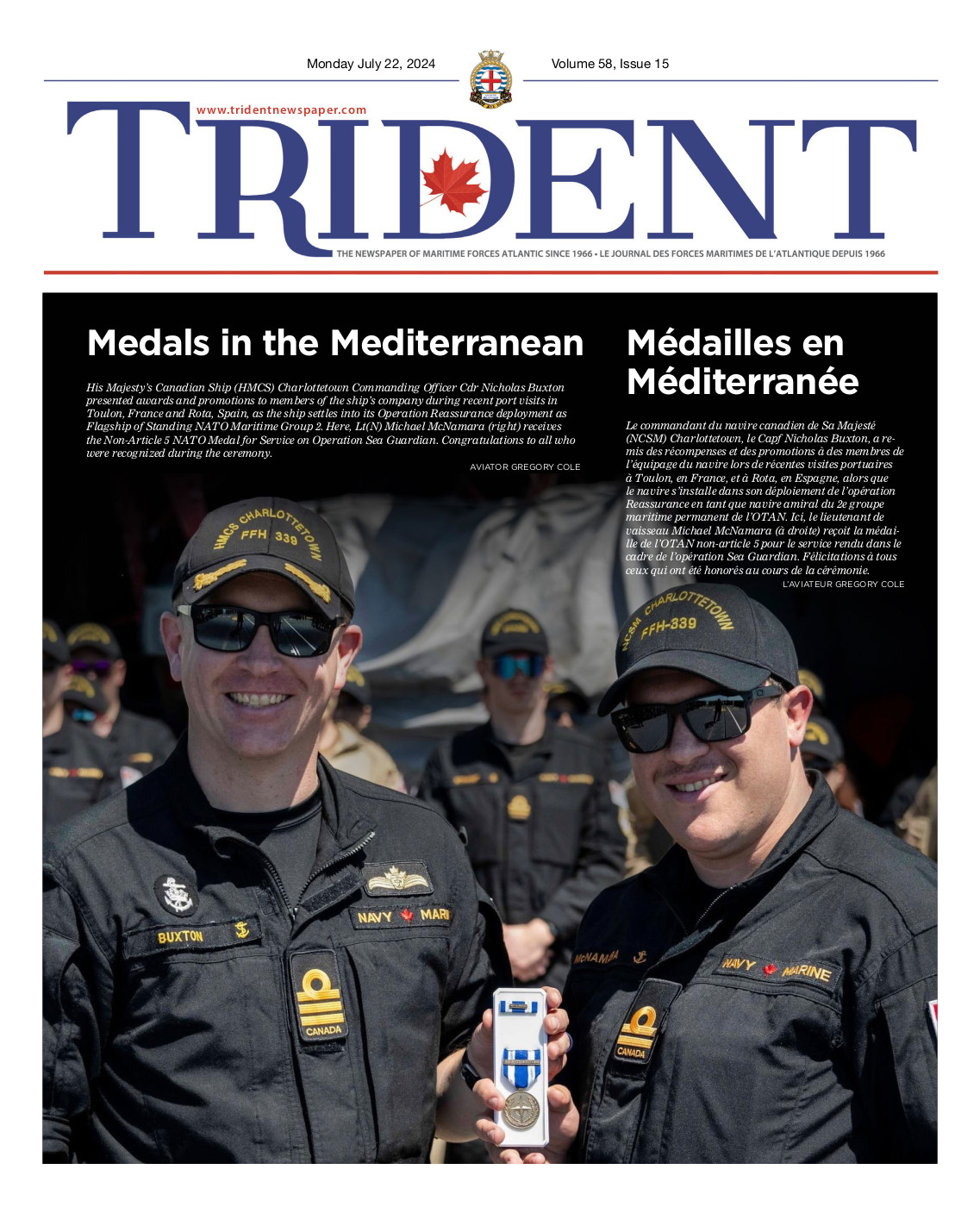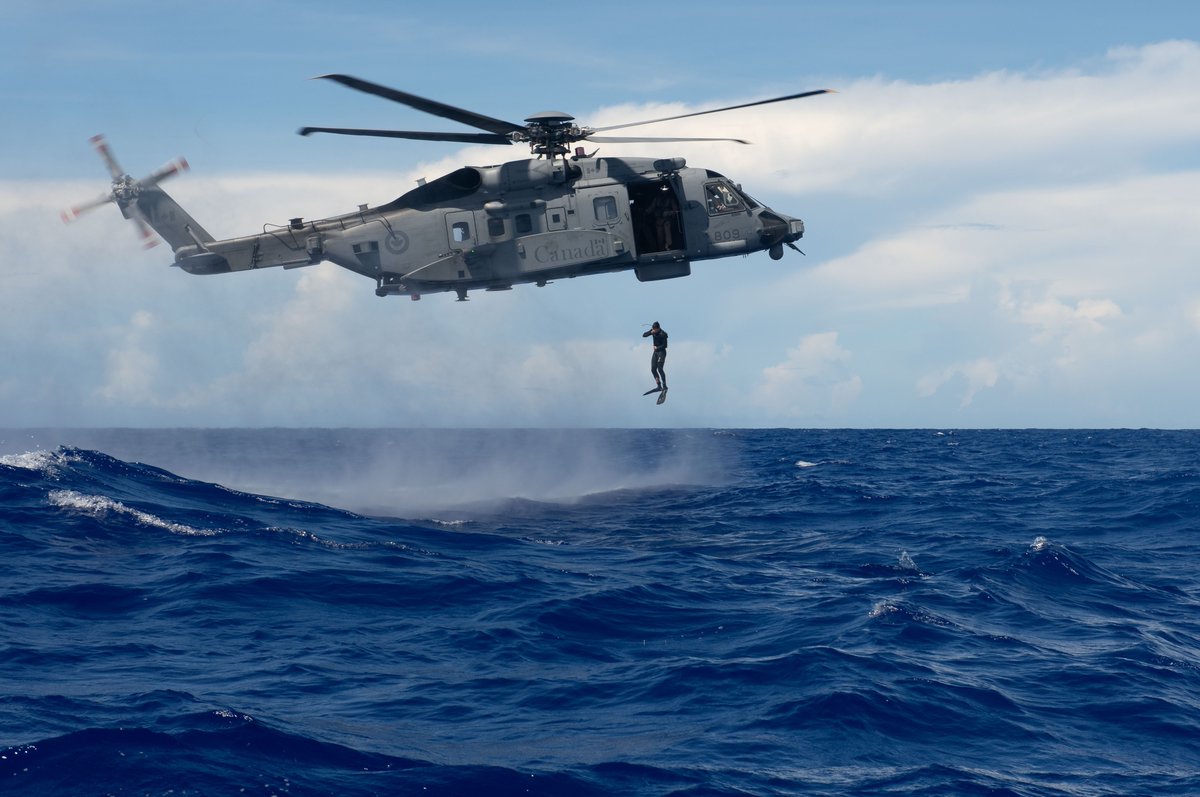
HMCS WINNIPEG, CAF PHOTO
Shared experiences connect Navy ship’s divers across generations
By Ryan Melanson,
Trident Staff
Training to be a ship’s diver is one of the most physically and mentally demanding challenges that a Royal Canadian Navy sailor can take on. Candidates spend six weeks being pushed to the limits by senior instructors – this includes intense daily physical training, frequent exposure to new and uncomfortable scenarios, and the expectation that prospective divers can grasp difficult new skills and concepts in a short period of time.
Yet for LS Jeff Hines, who completed his ship’s diver course in 2016, those challenges weren’t enough to keep him from falling in love with the trade.
“It’s probably some of the best training you’re ever going to get in the Navy. It’s the best course I’ve been on, hands down,” he said.
“You’ll work very hard, but you have fun while you’re doing it.”
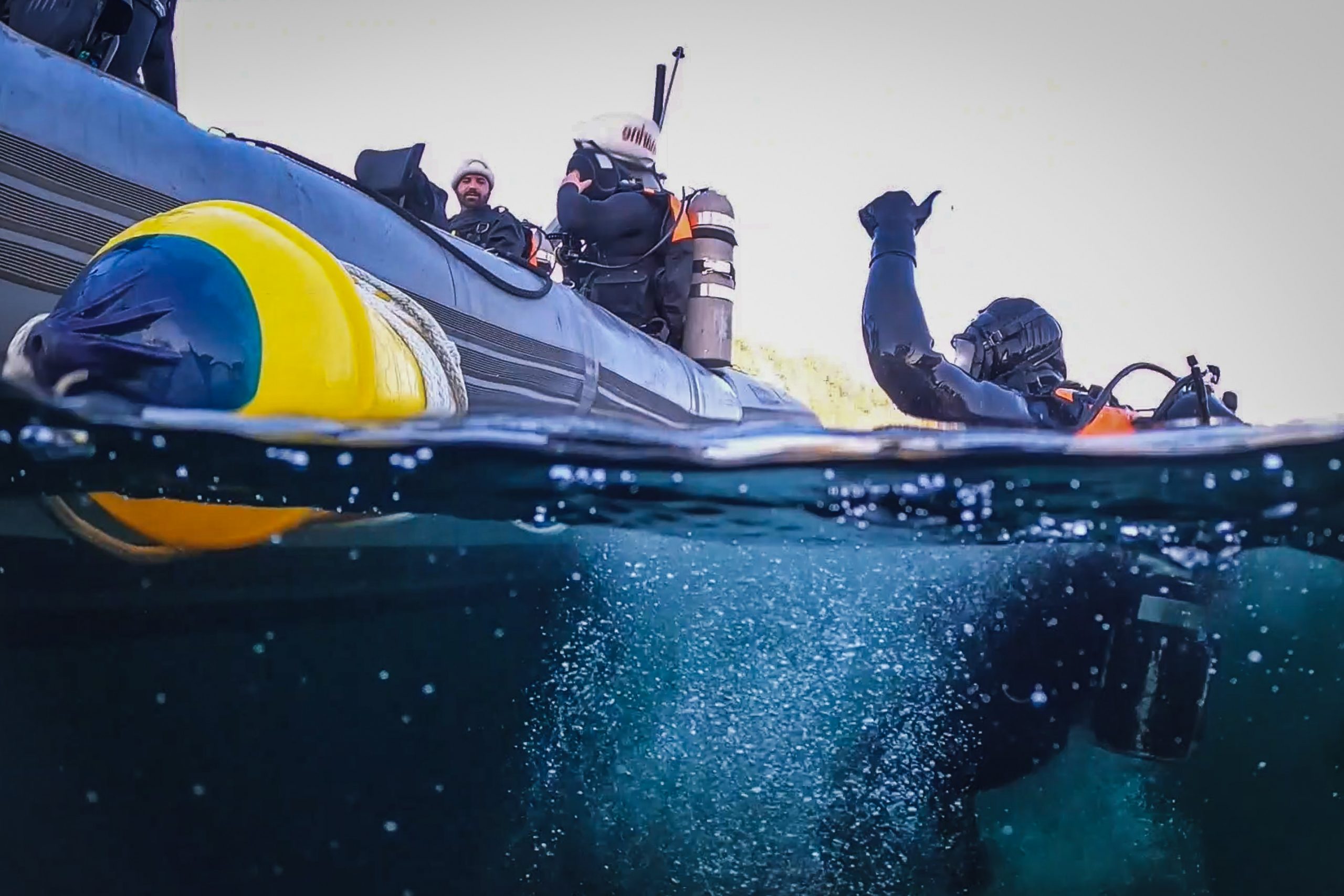
S1 BRYAN UNDERWOOD, CAF PHOTO
It’s a common sentiment among most who’ve spent time as naval divers, whether at the ship’s diver level, or in the more advanced port inspection and clearance diver roles. It suggests that it takes a certain type of person to excel in the role, someone who finds excitement in plunging into the dark depths of the ocean to examine a ship’s hull, make small repairs or support operations in any number of different ways.
“You need to have grit to get through the course and do the job,” said Bill Lee, a former RCN member who graduated from his course back in 1973 on his second attempt, after a shoulder injury forced him to step away from his first course three years earlier.
Lee recalled frantic mornings during his training – being woken and immediately jumping into wetsuit gear for a swim to Shannon Park and back – all before the first dive of the day. He also described diving in Halifax Harbour with a blackout mask, relying on the diving tender to signal bells and pulls that attached the diver and tender with a rope, to locate objects that had been tossed in.
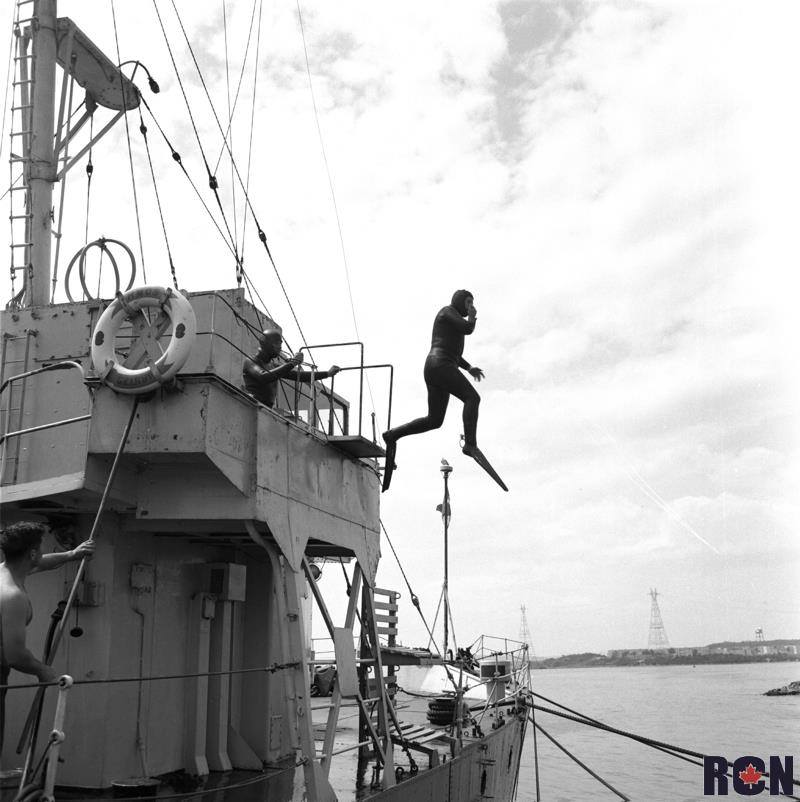
SUBMITTED
Today, the training for new ship’s divers has been slightly modified, with more focus on the practical skills and training needed. But this doesn’t mean diver training has gone soft, explains LCdr Neville Lockyer, the current Commanding Officer of Fleet Diving Unit (Atlantic). Recruits can still expect a very difficult and physical course, though hopefully with fewer injuries or unnecessary burnout. The ratio of those who successfully complete the course, compared to those who don’t, also proves it’s no walk in the park.
“There still absolutely has to be a certain amount of adversity that people have to put up with in order to do this job,” LCdr Lockyer said. “You need to have a certain amount of toughness to you – the environment you’re dealing with isn’t kind, there’s pressure and there’s cold and darkness and other factors.
The shared experiences of pushing through difficult training, and the unique stories that come from diving on deployments across the world, help create a camaraderie among current and former ship’s divers. And for those who complete the training course together, or serve together as part of a small ship’s diver team, the bonds can last a lifetime.
Lee, and his friend Moe Muise, another former RCN diver, met on their first ship’s diver course 50 years ago, and are still connected today. They’re also part of a newly formed ship’s divers group that has so far brought together 250 current and former divers on Facebook. They share photos and stories, keep up with the latest Navy news, and they’ve even worked with ring manufacturer Jostens to develop a new Navy Ship’s Divers ring that’s now available to purchase for all those who’ve served in the role. The first rings were ordered in 2019, and are now proudly worn by some of the group’s founding members.
“There’s a special connection between all of us, and we’re absolutely looking to recruit more ship’s divers, both from the past and from the present, to be a part of our group,” Muise said, adding that their colleague former RCN ship’s diver and clearance diver Jack Lewis also deserved credit for being a diligent moderator and helping to bring the facebook group together.
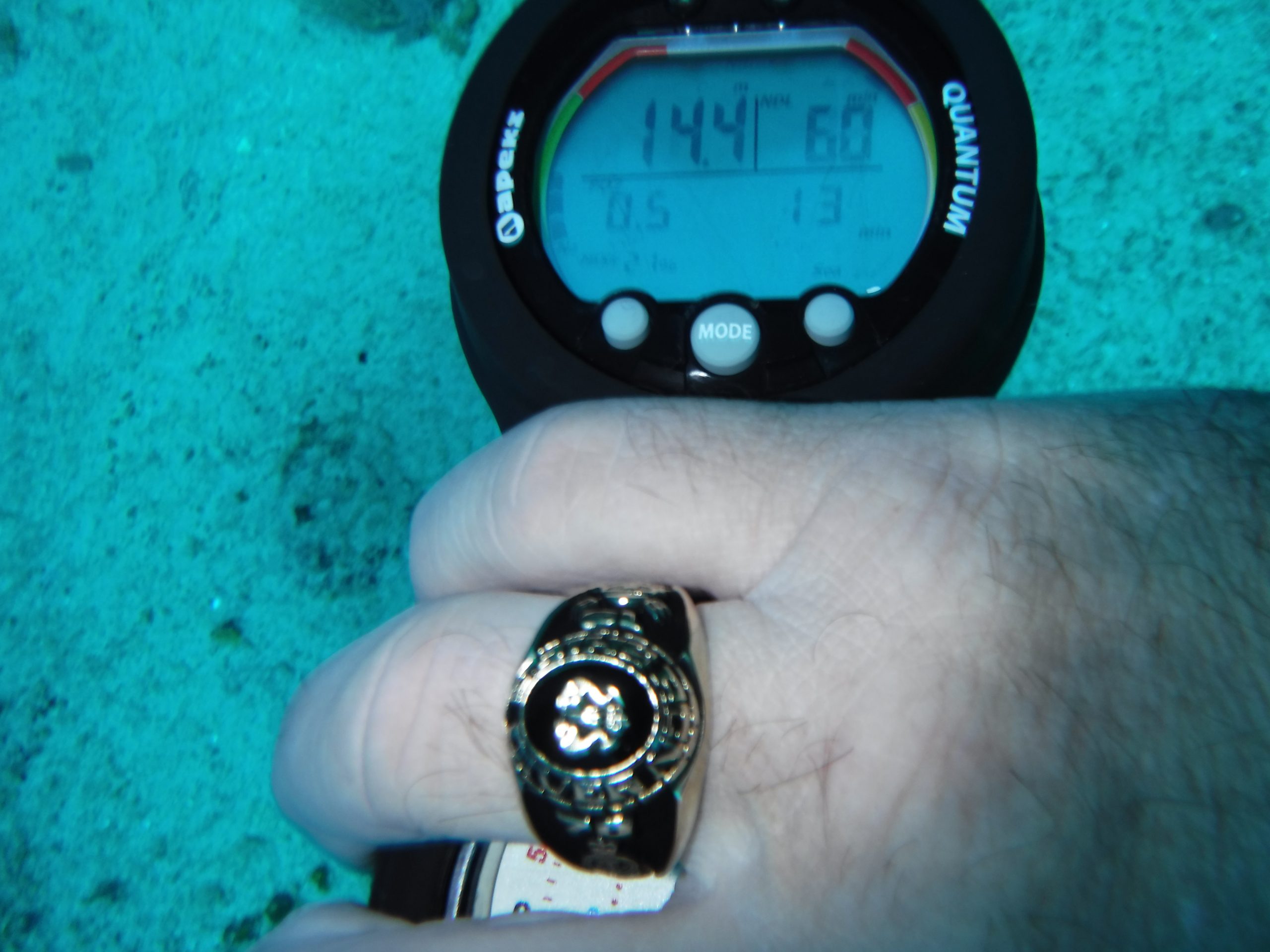
SUBMITTED
And for RCN members who haven’t entered the diving world yet, but who may be interested in becoming a ship’s diver, the advice is to embrace the challenges and difficulties, because the payoff is worth it.
“It’s not easy, but you build up that confidence, and then there’s a brotherhood that gets built along with that,” LS Hines said.
Muise echoed those comments.
“It was the best thing I did for my career, I’d do it all over again,” he said.
For more information on the ship’s divers group and the new ship’s divers ring, visit “Royal Canadian Navy Ship’s Divers Group” on Facebook at https://www.facebook.com/groups/405636316825591 and http://Jostenscanada.com/RCNSD.HTML

